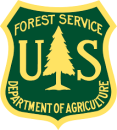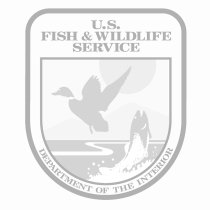Location
States
ArizonaIntroduction
The Borderlands Earth Care Youth (BECY) Institute provides paid internships to youths age 15-20 to work with conservation professionals conducting restoration projects in the ecologically rich US-Mexico border region of Arizona. The program, initiated in Patagonia, AZ in 2013, has expanded to Douglas and Nogales, AZ. In addition to hands-on restoration work, the program curriculum covers three major themes: watershed restoration, ecosystem restoration, and community restoration.
Key Issues Addressed
Population growth, development, and increased urbanization have contributed to fragmentation and degradation of wildlands in the Arizona-Sonora borderlands. Additionally, the region faces significant economic challenges -- at 23.5%, Santa Cruz county has a poverty rate 9.1% higher than the national average. The BECY Institute and affiliated organizations seek to promote a restoration-based economy by creating opportunities to earn a livable wage through employment that involves restoration of degraded landscapes. Participants in the youth program are paid to complete a variety of restoration projects through which they learn marketable skills and a conservation ethic.
Project Goals
- Hire culturally diverse youth living on the US/Mexico border to conduct restoration projects in the trans-national watersheds they call home
- Train the next generation of land stewards, provide marketable job skills, and educate tomorrow’s conservation leaders about the issues that surround watershed restoration, ecosystem restoration, and food-system restoration
Project Highlights
More Than a Summer Job: “Youth don't have many job opportunities in high school, and they may not know exactly what career they want to get into. BECY has answered this for me by getting me a job outside of class during the summer and introducing me to so many new people with such interesting, specialized careers.” -Jake Paun, Intern with BECY Douglas in 2015, youth leader in 2016, and facilitator in 2017
Hands-On Conservation Experience: Each crew, led by two educational facilitators, spends 32 hours a week for 6 weeks completing conservation projects including: building wildlife ponds, planting native wetland species, constructing erosion control structures, pond/spring restoration, endangered species habitat creation, invasive species invasive species
An invasive species is any plant or animal that has spread or been introduced into a new area where they are, or could, cause harm to the environment, economy, or human, animal, or plant health. Their unwelcome presence can destroy ecosystems and cost millions of dollars.
Learn more about invasive species removal, native seed collecting/curating, native plant propagation, permaculture design, and garden work.Fostering a Restoration-Based Economy: By providing local youth an opportunity to gain paid restoration experience, the program helps support a restoration economy in rural borderlands. Ecotourism and ranching are the major economic drivers in Patagonia, and they both depend on healthy ecosystems to succeed. Restoring streams and uplands can bolster these industries while employing local residents directly. Furthermore, providing local residents with more employment opportunities that are restoration-based may offer economic alternatives to mining and resource extraction.
Future Conservation Professionals: Eighty-three youth have graduated from the program and many are now studying conservation-related fields in college. Some graduates of the program have been hired to return as Education Facilitators, with more graduates seeking positions.
Teachable Moments: BECY facilitators find balance between hands-on work and ecological education. They have developed and institutionalized the skill of identifying the natural group flow and finding opportunities to redirect attention during lulls or lag periods.
Lessons Learned
- Exposure to a variety of perspectives and projects helped ensure that the program was engaging for a diverse group of interns. Interns work directly with a wide array of professionals including ranchers, farmers, federal employees, and non-profit groups.Through direct work with conservation professionals, interns are better able to envision themselves in positive professional roles in the communities where they have grown up.
- Work provided by the interns makes a tangible difference in their community. For example, interns built the Watershed Living Laboratory, an outdoor classroom on the Patagonia Union High School campus. The interns worked with ecologists and landscape designers to design and then install rain gardens on campus. Two of the gardens were planted with native pollinator-attracting plants, including eight species of milkweed. One was planted with native edible plants, and the last one was planted with heritage fruit trees. Two cisterns were installed, with one supporting the fruit trees and the other supporting a fish pond. Hundreds of students interact with these gardens on a daily basis.
- Starting small was key to the success of the program, which began with a pilot project in 2013. The curriculum and schedule have evolved and continue to be refined each season.
- In addition to learning technical skills in applied restoration, the interns cultivate a variety of marketable life skills, including teamwork and leadership.
Next Steps
- Expand the institute to Nogales, AZ in 2018 potentially fund expansion into other rural border communities in the US and Mexico
- Continue to identify a variety of project partners throughout the region to engage youth in conservation-related work
Funding Partners
- U.S. Forest Service
- Arizona Department of Environmental Quality
- Agnese Nelms Haury Program in Environment and Social Justice
- Arizona Partners for Fish & Wildlife
- Biophilia Foundation
- Arizona Game & Fish Heritage Fund
Resources
- BECY 2017 Final Report
- BECY Institute webpage
- Agnese Nelms Haury Program in Environment and Social Justice
- Almuñia de los Zopilotes
- Appleton-Whittell Research Ranch of the Nation Audubon Society
- Bar Boot Ranch
- Borderlands Habitat Network
- Dirty Girl Farmette
- Douglas High School
- Harris Heritage Farm
- Pampered Goat Farm
- Patagonia Community, Garden
- Patagonia Union High School
- Sands Ranch
- Santa Fe Ranch Foundation
- Madrean Archipelago Plant Propagation Center
- Coronado National Forest
- Deep Dirt Farm Institute
- Karchner Caverns State Park
Contact
- Caleb Weaver: weaver.caleb@gmail.com
Case Study Lead Author
- Ashlee Simpson, CART Graduate Research Assistant, University of Arizona
Suggested Citation
Simpson, A. C. (2018). “Employing Youth in Conservation at Borderlands Earth Care Youth Institute.” CART. Retrieved from https://www.fws.gov/project/youth-conservation-becy.







